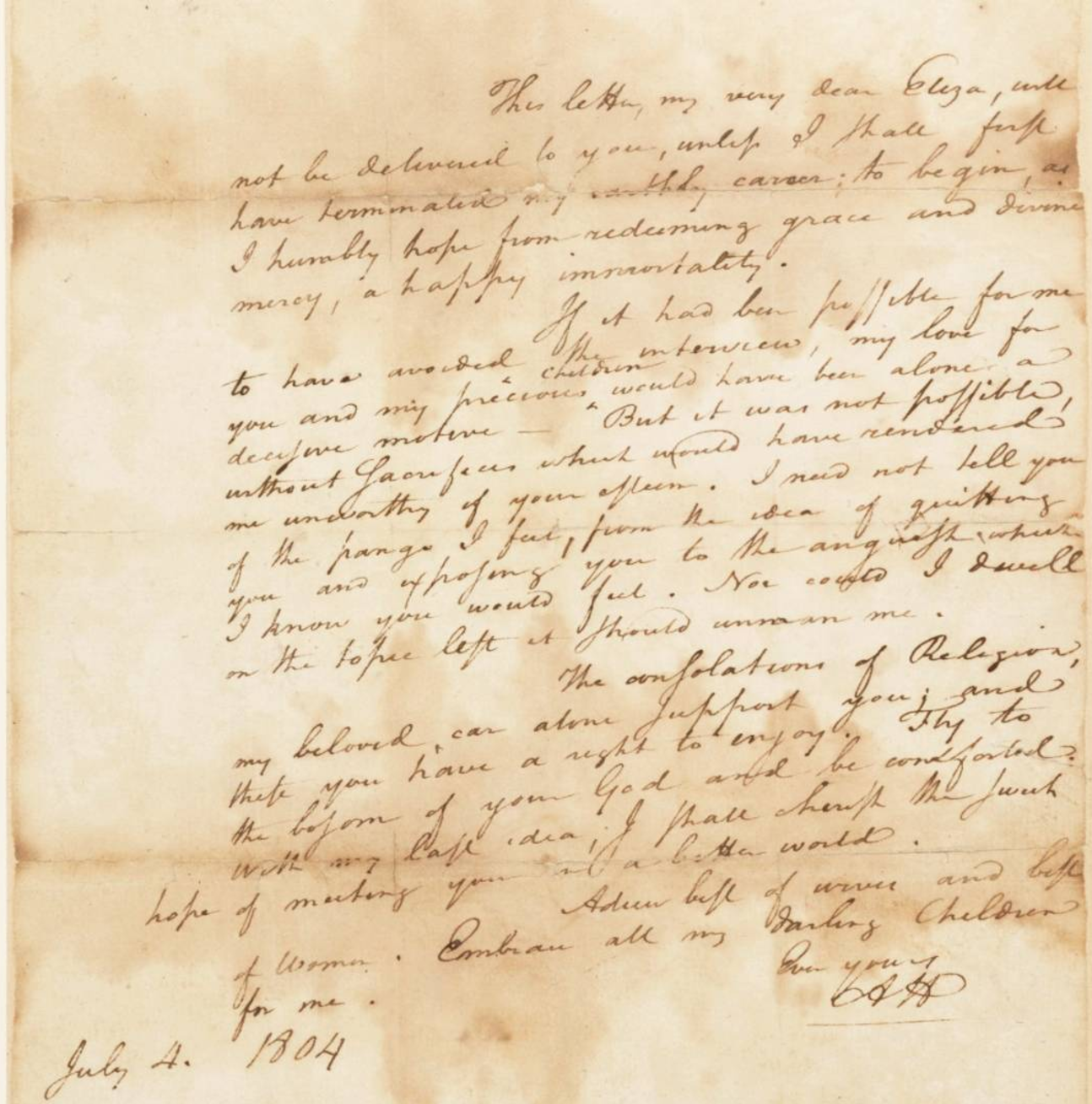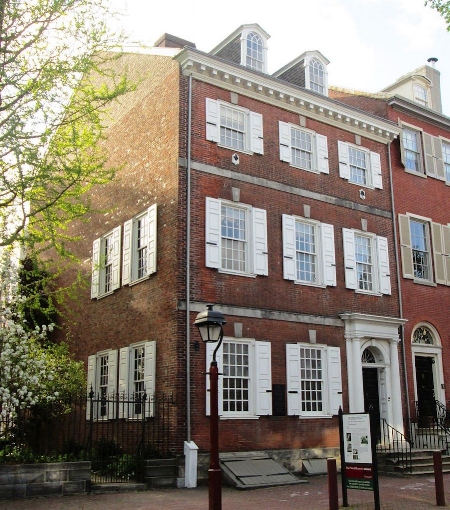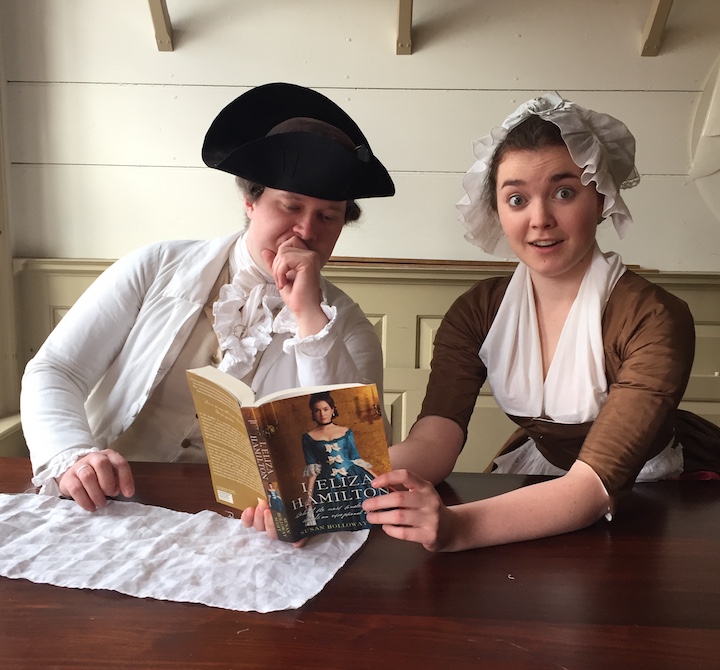In the days before photographs, a lock of a loved one's hair was often the single most lasting link that the living could have with the deceased. Whether cut while the person was alive or dead, the hair could be elaborately woven or braided, preserved under glass or incorporated into jewelry, or simply tied with a ribbon or thread and tucked away as a precious memento.
But hair from from a famous head became more than a mourning memento. It was history, a surviving reminder of a notable man or woman. Famous hair was collected and treasured as a tangible reminder of a more glorious past.
I saw these two wisps of hair, above, framed together in the collection of the Massachusetts Historical Society. Even though these two were surrounded by dozens of other examples, they stood out, and would have been prized for a number of reasons. The strands of hair at the top belonged to Alexander Hamilton, the first United States Secretary of the Treasury, while the strands on the bottom were from General George Washington, the first President of the United States and "The Father of his Country."
As the Society's records note: "Given by Alexander Hamilton's son, James A. Hamilton of Nevis, to Eliza Jones Hersey Andrew (1826-1898), the wife of Massachusetts' Civil War Governor John Albion Andrew (1818-1867) on October 27, 1865." The hair is affixed to writing paper by red shellac seals, and the inscriptions are by James A. Hamilton.
This gift would have had special significance in the fall of 1865. The American Civil War had just ended, and the Union forces had won. Mrs. Andrew and her husband were ardent abolitionists, and Governor Andrew had been responsible for authorizing the 54th Regiment Massachusetts Volunteer Infantry in 1863 as soon as President Lincoln had permitted the enlistment of African-American soldiers. Mrs. Andrews must have welcomed the gift of hair belonging to two of the Founding Fathers - men who had helped create the original United States that the Union forces had just fought so hard to secure.
But the hair must have been treasured by James A. Hamilton, too. Washington's hair had most likely been given to his mother or father at the time of the general's death in 1799. The hair of his father, Alexander Hamilton, would probably have been cut soon after his death in 1804, following his fatal duel with Aaron Burr - sixty years before its presentation to Mrs. Andrew.
James Alexander Hamilton was the third son of Alexander and Eliza Hamilton. Born in 1788, he was only sixteen when his father died, yet throughout his life he vigorously defended his father's reputation against numerous detractors. Look more closely at the the inscription beneath the hair, and compare the two way he's written his father's name, and then how he's signed his own. Then look at the example of Alexander Hamilton's signature, below: it certainly appears that at some point the grieving son borrowed his father's distinctive signature and made it his own, a small, poignant homage. The MHS's mention of James Alexander being "of Nevis" is a reference to his sizable country house on the Hudson River that he named Nevis in honor of the Caribbean Island that was his father's birthplace. In other words, James Alexander would not have given away his father's hair lightly.
Then, of course, there's the hair itself. Both Hamilton and Washington are so often portrayed in portraits with white hair - the result of fashionable powdering (see my earlier post on Hamilton's hair) - that it was something of a shock to see that they both did indeed have the reddish-brown hair that contemporaries described. The strands of Washington's hair are short and fine, a tidy clip, but Hamilton's are long and wiry, weaving back and forth again and again in their thread binding. At the time of Hamilton's death, most men had begun to prefer shorter hair styles, but he still wore the by-then old-fashioned long queue (ponytail.) Were these strands cut from that same queue? I wonder....
Many thanks to Anne E. Bentley, Curator of Art & Artifacts, Massachusetts Historical Society, for her assistance with this post. Strands of hair of Alexander Hamilton and George Washington, Massachusetts Historical Society.
Read more about Alexander and Elizabeth Schuyler Hamilton in my historical novel I, Eliza Hamilton; order here. My latest historical novel, The Secret Wife of Aaron Burr, is now available everywhere. Order here.




























